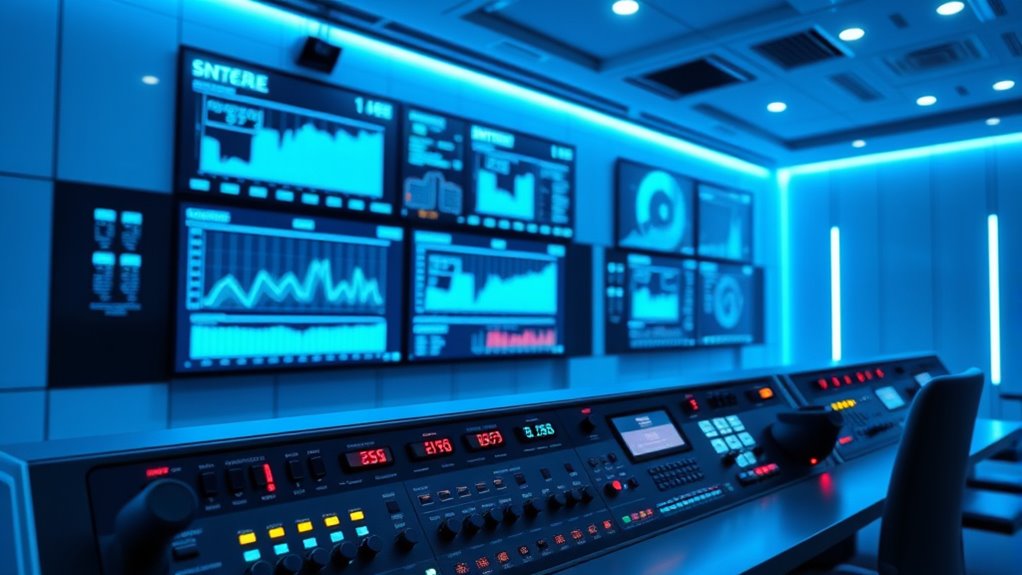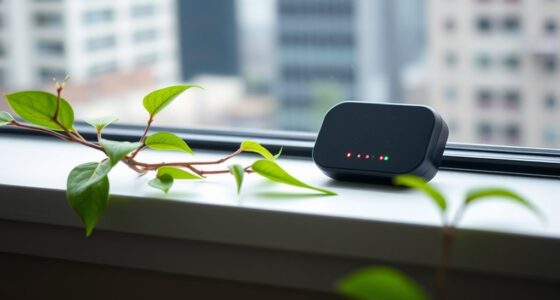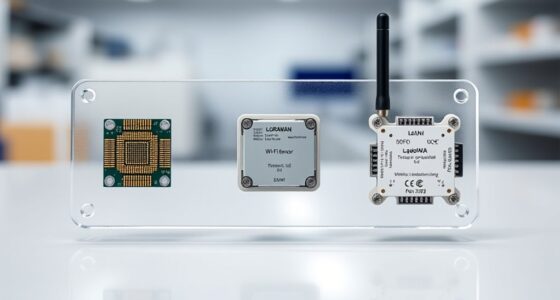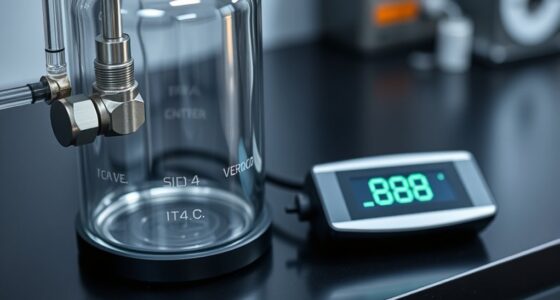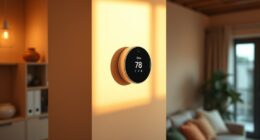Integrating IAQ sensors with a building management system allows you to monitor air quality in real-time, giving you immediate insights into factors like CO₂, humidity, and VOC levels. This connection helps you respond quickly to changing conditions, optimize HVAC performance, and enhance occupant comfort and safety. Proper sensor calibration and data analysis are key to maintaining accuracy and efficiency. Keep exploring further to discover how effective integration can transform your building environment management.
Key Takeaways
- Connecting IAQ sensors to BMS enables real-time monitoring of air quality parameters for immediate system responses.
- Proper sensor calibration ensures accurate data, improving HVAC efficiency and occupant safety.
- Selecting high-quality sensors enhances detection capabilities and supports data-driven decision-making.
- Data analytics from integrated sensors optimize ventilation and identify potential issues proactively.
- Centralized BMS integration simplifies maintenance, supports automated calibration, and provides comprehensive air quality insights.

Integrating Indoor Air Quality (IAQ) sensors with Building Management Systems (BMS) transforms how buildings monitor and maintain healthy environments. When you connect IAQ sensors to your BMS, you gain real-time insights into air quality parameters like CO₂ levels, humidity, temperature, and volatile organic compounds. But to guarantee these sensors deliver accurate data, sensor calibration becomes essential. Proper calibration aligns sensor readings with standard references, reducing errors and ensuring your system responds appropriately. Without calibration, inaccurate data can lead to unnecessary energy consumption or compromised air quality, undermining your building’s health and efficiency.
Additionally, selecting the right sensors with high color accuracy and sensitivity ensures precise detection of air quality variations, which is vital for effective system responses. Once sensors are calibrated, the true power of integration reveals itself through robust data analytics. Your BMS can process the vast streams of data collected from IAQ sensors, identifying patterns and trends that might go unnoticed otherwise. For example, data analytics might uncover that certain areas experience poor air circulation during specific times, prompting targeted ventilation adjustments. These insights help you make informed decisions, optimize HVAC operations, and improve occupant comfort and safety. As data accumulates, predictive analytics can forecast potential issues before they become critical, enabling proactive maintenance and reducing downtime.
The integration also simplifies managing multiple sensors across large buildings or campuses. Your BMS consolidates data from various sources, providing a centralized platform to monitor air quality holistically. This unified view allows you to quickly identify problem zones, verify sensor performance, and maintain calibration remains accurate over time. Automated calibration routines can be programmed into the system, maintaining sensor precision without manual intervention. Additionally, advanced data analytics tools can generate actionable reports, helping you track performance metrics, compliance with standards, and energy savings.
Frequently Asked Questions
How Do IAQ Sensors Impact Overall Building Energy Efficiency?
IAQ sensors improve your building’s energy efficiency by enabling ventilation optimization, ensuring you use only the necessary amount of fresh air. This targeted approach reduces overall energy consumption, preventing waste from over-ventilation. By continuously monitoring indoor air quality, you can adjust systems in real-time, cutting energy costs while maintaining a healthy environment. This smart management balances comfort and efficiency, making your building more sustainable and cost-effective.
What Are the Maintenance Requirements for Integrated IAQ Sensors?
You’ll need to follow calibration protocols to keep your IAQ sensors accurate—think of it as a spa day for your sensors. Regularly check their sensor lifecycle, replacing or recalibrating as needed to avoid false readings. Neglecting maintenance can turn your smart building into a smog machine. Stay vigilant, perform routine maintenance, and your sensors will keep providing reliable, fresh air data—no drama required.
How Is Data From IAQ Sensors Secured Against Cyber Threats?
You secure data from IAQ sensors by implementing strong cybersecurity protocols, such as firewalls and access controls. You also use data encryption to protect information during transmission and storage. Regularly updating firmware and software helps patch vulnerabilities. Additionally, monitoring network activity detects suspicious behavior. These steps make sure your IAQ sensor data remains safe from cyber threats, maintaining the integrity and privacy of your building management system.
Can IAQ Sensors Detect Specific Indoor Pollutants Accurately?
A watchful eye catches the smallest details. Yes, IAQ sensors can detect specific indoor pollutants accurately, but only if they’re properly calibrated. Sensor calibration ensures pollutant specificity, allowing precise identification of substances like VOCs or particulate matter. While technology has advanced, remember that the accuracy depends on the sensor’s quality and calibration frequency. Trust the process, and you’ll get clear, reliable indoor air quality insights.
What Are the Costs Associated With Integrating IAQ Sensors Into Existing Systems?
You can expect the costs to integrate IAQ sensors into your existing system to include installation expenses and potential compatibility challenges. Installation costs vary based on the sensor type and building size, while compatibility issues may require additional equipment or software upgrades. Budget for these factors upfront to guarantee smooth integration, and consider consulting with specialists to address potential challenges effectively and avoid unexpected expenses.
Conclusion
Think of integrating IAQ sensors with your building management system as guiding a ship through calm and stormy waters alike. With real-time data acting as your compass, you can navigate toward ideal air quality effortlessly. This seamless alliance ensures your building’s environment remains balanced, just like a steady sailor steering through changing tides. Embrace this integration, and you’ll steer your space toward healthier, more efficient days ahead.
